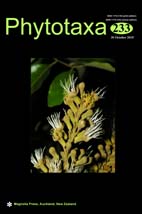Abstract
Moldenhawera is a small genus of caesalpinioid legumes from eastern Brazil, characterized by the presence of T-shaped trichomes, flowers lacking a hypanthium, clawed petals with wrinkled margins, and dimorphic androecium with only one fertile stamen. Moldenhawera longipedicellata is described as a new species from the Atlantic Forest phytogeographical domain in Espírito Santo State, Brazil. It is similar to M. floribunda, M. polysperma and M. papillanthera by presenting slender staminodia filaments, longer than the anthers. However, it can be distinguished from those related species by the once-pinnate leaves (vs. bipinnate), flowers with long pedicels (2–5.9 cm long) and larger sepals (16–25 × 4–8 mm) and petals (petal claw 10–19 mm long and petal blade 14–24 × 13–23 mm).

